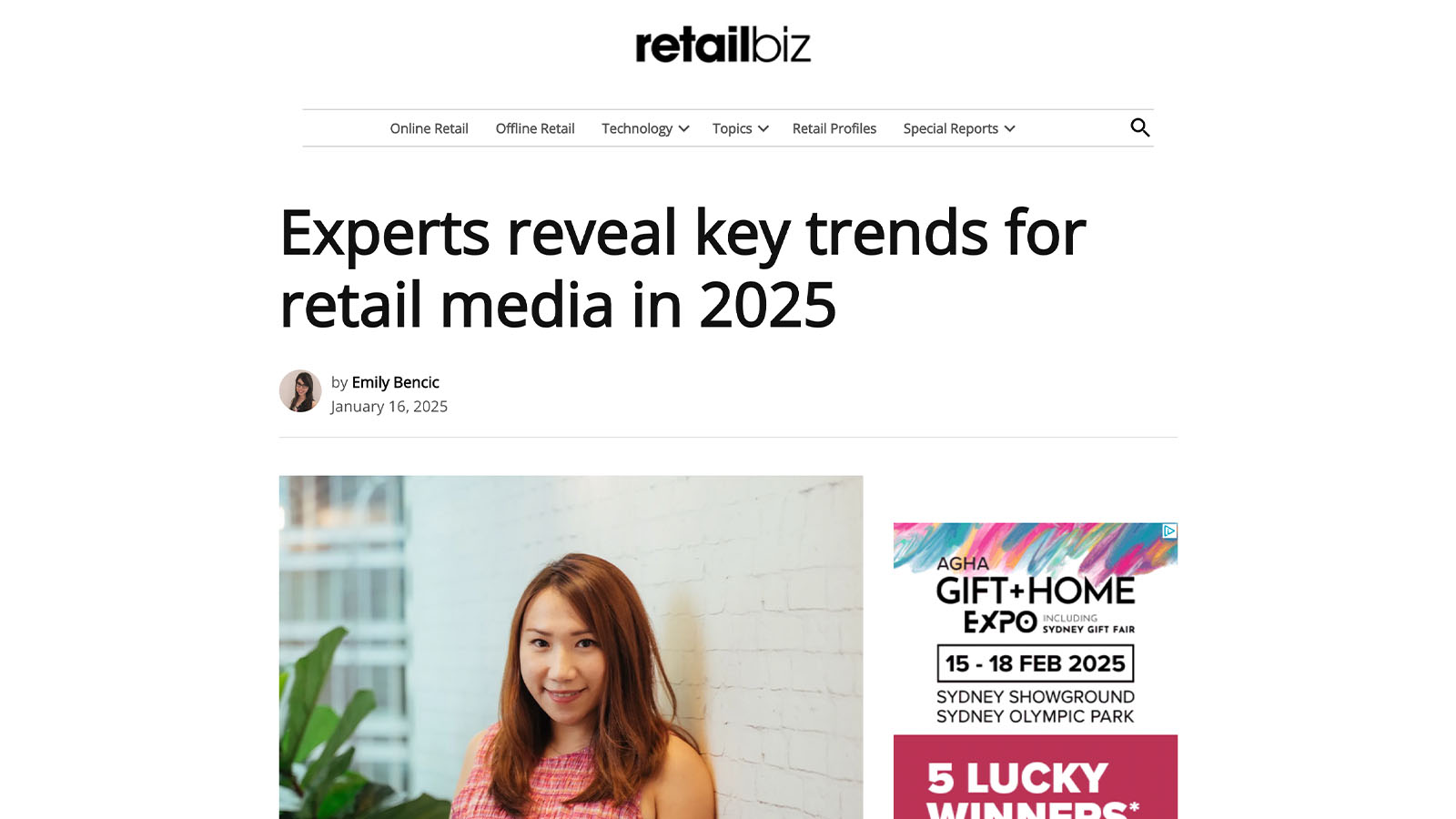1 min read
Retail Media Trends 2025: What Experts Say Brands Must Do Next
Explore 2025's top retail media trends, including monetization, AI-driven targeting, and personalization strategies shaping brand growth and loyalty.
Get the latest insights, research and news delivered straight to your inbox.
Plus, enter to win the 2nd edition of Omnichannel Retail by Tim Mason & Sarah Jarvis!
No spam. We promise. 💜
Featured Case Study:
See how Eagle Eye helped Giant Eagle relaunch myPerks, delivering 25M+ personalized offers monthly and boosting loyalty program ROI.
Contact us to find out how we can enable your teams on our platform.


As someone who works for a company that provides a modern loyalty platform, I'm often in discussions about "personalized offers." My perspective has evolved over time, and I've also noticed confusion in the industry between what is described as personalization and what is actually sophisticated segmentation.
In this article, I offer a framework to help clarify what constitutes a truly personalized offer and why this matters for maximizing the returns from a loyalty program.
A genuinely personalized offer is unique and exclusive to an individual customer. Anything less is simply intelligent segmentation. We can understand this distinction by looking at two dimensions in an offer:
When combined, these two dimensions create a 2x2 matrix for sharpening the definition of personalization but also illustrating how offers have evolved - and continue to evolve - over time.

For decades, most retailers have leaned on mass promotions such as "20% off everything this weekend" or "Buy One Get One Free." While these tactics reliably move volume, they come at a high cost. Margins are eroded, brand equity is diluted, and customers are effectively trained to purchase when discounts are offered.
The problem goes deeper: because these promotions apply indiscriminately, much of the investment flows to shoppers who are deal-driven and often the least profitable. Meanwhile, the most loyal and profitable customers are under-rewarded. In effect, retailers subsidize bargain hunters while neglecting their best customers.
This dynamic has fueled the growth of Everyday Low Price (EDLP) retailers, who win by offering consistent prices to all customers. By avoiding the trap of storewide promotions, EDLP players build trust - and capture value from customers mass-promotion retailers are failing to nurture.
Using modern loyalty platforms, many retailers are transitioning away from mass promotions by creating a pool of gated offers. These offers are not open to everyone; they are restricted by eligibility rules - for example, being a member of the loyalty program and activating the offer in the app. From this pool, each customer is issued a curated selection based on their past behavior and the retailer's commercial priorities.
While this is a clear step up from blanket promotions, it remains one-size-fits-many. The pool usually covers only a portion of the product range. For instance, if a pharmacy retailer features Huggies diapers in its pool, a loyal Babylove shopper may find nothing relevant. The retailer misses incremental sales, the supplier loses visibility, and the customer feels overlooked.
A further limitation is that qualification and reward structures are rarely customized. Different shoppers will respond to different incentives, and a fixed pool cannot adapt to these nuances.
Curated pools are certainly more effective than mass promotions, but they still leave large gaps. In reality, this is still targeting - not true personalization.
This is where true personalization begins. A genuinely individualized offer tailors the product, qualification, and reward to each customer. For example, the illustration shows two shoppers receiving completely different incentives for the same category:
Customer 1: "Spend $7 on Frozen Fruit & Vegetables this month and get 110 points."
Customer 2: "Spend $12 on Frozen Fruit & Vegetables this month and get 180 points."

With hundreds of millions of potential variations, offers can be highly relevant to each individual. Retailers that use this approach see far greater engagement and redemption compared to segment-based digital coupons.
Crucially, this model isn’t limited to "high-low" retailers that rely on discounting. Everyday Low Price (EDLP) retailers can also adopt it, as algorithms can be configured to reward only incremental spend. This preserves the promise of consistent low prices while still nudging additional purchases.
For brands, the precision is equally compelling. Instead of funding broad, inefficient promotions, they can invest where it guarantees results. For example, the Frozen Fruit & Vegetables "challenge" offer shown here typically delivers a 4:1 sales uplift relative to investment.
With recent advances in AI and machine learning, some retailers are accelerating the transition from Stage 1 to Stage 3. What once required years of in-house investment is now accessible off the shelf from specialist players. Even retailers that have sophisticated in-house analytics capabilities - for example, Carrefour and Tesco - are partnering with out-of-the-box solutions, like EagleAI, to accelerate the journey to Stage 3, and at a fraction of the cost of building in-house.
Our end-to-end personalized offers solution is designed to plug into existing systems, meaning it can be implemented in weeks. And because it doesn’t require a large upfront capital commitment, you can move quickly while keeping risk low and your options open. Please get in touch if you'd like to learn more.
Get the latest insights, research, and news delivered straight to your inbox.
Plus, enter to win the 2nd edition of Omnichannel Retail by Tim Mason & Sarah Jarvis!
No spam. We promise. 💜

1 min read
Explore 2025's top retail media trends, including monetization, AI-driven targeting, and personalization strategies shaping brand growth and loyalty.

5 min read
Experts debate whether AI is making us lazy or enhancing thinking. Discover why AI should be a partner, not a crutch, in the digital age.

1 min read
Eagle Eye CEO Tim Mason shares his views on the future of real-time loyalty marketing and why relevancy and timeliness are the new standards of success.